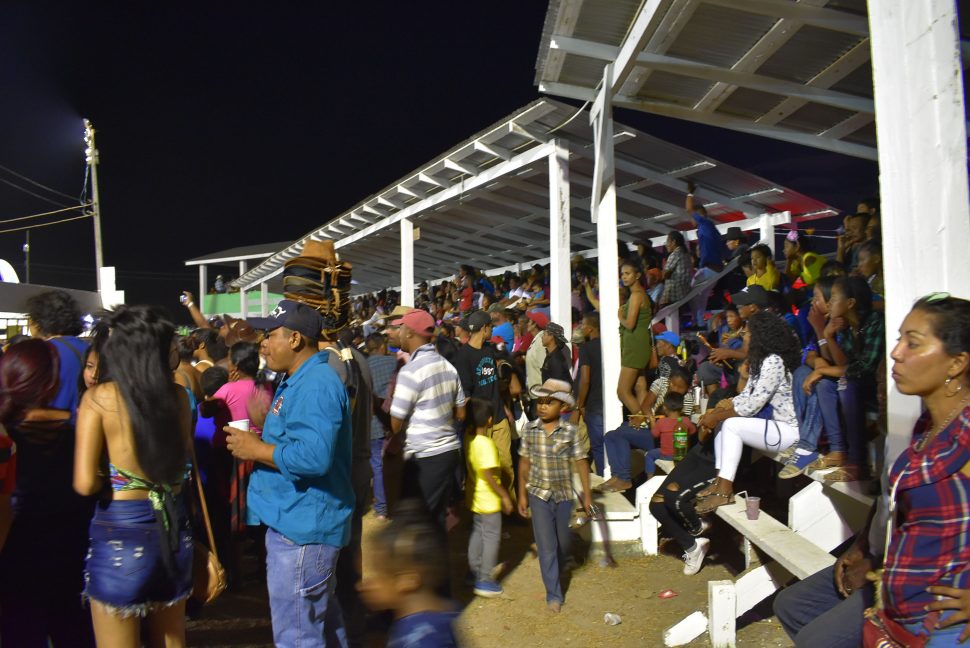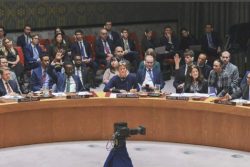The Kanuku and Kamoa highlands and the vast Rupununi savannahs make up the Upper Takutu-Upper Essequibo region. The forested Kanuku Mountains divide the Region in two. The north savannahs are about 2,000 square miles in area, and the south savannahs are 2,500 square miles. There are approximately 15, 000 persons living in this area.
Lethem itself is a dusty border town situated in the Upper Takutu–Upper Essequibo region. It has a population of about 800 inhabitants and is one of several communities around Guyana that saw a drift of business enterprises from coast to interior locations, triggered by the several thousands of Brazilians who crossed the Takutu Bridge to trade in Lethem.
Lethem is also used by the Brazilians as a stopover on the way from Brazil to Georgetown, primarily en route to gold mining areas in the interior. Some may say they take the long way around.
The frequency of Brazilian travel has caused domestic airlines to increase their flights between Georgetown and Lethem. These days, there are about four round flights daily, we are told, all of them out of the considerably modernized and upgraded Ogle International Airport.
Some things that have to do with the communication between coastal and hinterland Guyana remain retarded. By and large coastal Guyanese venture into interior areas of the country only if they love the hinterland experience or if they are doing business in there – invariably, gold mining. Lethem usually awakens from the relative slumber that tends to afflict so many interior communities when the Rodeo comes around. It is an opportunity, albeit a brief and limited one to catch a glimpses of some of the rest of Guyana, not least the middle class coastal Guyanese revelers and the returning Guyanese, who, before they leave the Rupununi this time, would have booked their hotel accommodation to return for next year’s rodeo.
Lethem, for all its constraints associated with being a slow-moving interior township, has not, however, stood still. It has, in relatively recent years, found itself continually adjusting to the changes in the fortunes of the gold mining industry. The instability in gold prices and the attendant fluctuation of the fortunes of the miners on the one hand , and the strengthening of environmental, safety and health and other regulations that compel a higher level of compliance, on the other, continue to hold the Lethem economy firmly in its grip. It reflects itself in the hotel industry. It is understood that hotels have seen a drop in occupancy of about fifty percent.
The approximately two dozen businesses in the Industrial Area enjoy brisk commercial encounters with crossing Brazilians on a daily basis. Stabroek Business understands that the peak season for business is September to January. During that period the local Immigration services ‘process’ between three and four thousand vehicles crossing the Takutu Bridge weekly. The trade, we are told, is sufficiently brisk to allow businesses on this side of the border to dispose of the equivalent of a 40-ft. container of assorted goods weekly. Holidays also bring windfall encounters with shopping-mad Brazilians making the trip into Guyana. Their focus is primarily on clothing, shoes, hardware and electronics. The authorities on the Brazilian side only allow a limit of Real equivalent to around $55,000. Shoppers, in these circumstances, have simply learnt to be resourceful.
Shoppers come mainly from Boa Vista and Manaus. The trip from Boa Vista to Lethem can take appropriately two hours with the public transportation. A trip from Manaus can take about twelve hours by bus.
Public transportation from Manaus to Lethem is available thrice weekly.
Trading is brisk business in Lethem so that rental costs for business premises have long gone ‘through the roof.’ You can pay as much as G$1.5 million per month to rent trading space measuring 110 feet x 70 feet. At $82.00 per kilowatt (plus vat) you can end up with a monthly electricity bill in the vicinity of $400,000.
The huge expanses of grassy savannah make Lethem ideal for cattle-ranching. There are around a dozen prominent Cattle Ranches at Lethem among which are the Dadanawa, Karanambu, Point Ranch, Central, Silver D, Manari and Double D Ranches. There are also several other smaller ranches scattered across Region Nine.
Several years ago, much of the beef sold in the coastland areas of Guyana came from the Rupununi. That has changed drastically. Vice Chair of the Rupununi Livestock Producers’ Association (RLPA) Rebecca Faria says that rising costs associated with marketing beef on the coast has been the primary inhibiting factor. She lists the prohibitive air freight costs and the absence of an all-weather road as the principal challenges.
The RLPA was founded in the 1970’s to represent the interests of the sector. These include lobbying for policy changes that can enhance the fortunes of the ranchers including pasture improvement and breeding programmes designed to enhance the well-being of the cattle. The RLPA has also been charged by the Regional Democratic Council with the responsibility of managing the abattoir at Lethem. Statistics provided by the RLPA indicate that over the past eight years 3, 730 cows were slaughtered at the Lethem Abattoir.
Some of the smaller ranches in areas like Deep South and Karasabai sell their beef in their own communities. Others walk for two to five days with their cattle to Region Eight where the prices are better. En route, they sleep in hammocks along the way. Some have horses so that the journey is a little easier.
Poultry is reared commercially at Lethem, albeit on a limited scale. There is stiff competition from chicken imported from Brazil, the retail cost of the imports being around $300 per pound cheaper. As with many other entrepreneurial endeavours a high level of dependency on inputs from the coast push operating costs upwards.
Rebecca comes across as a woman concerned with the fortunes of her community. She wants official engagement to talk earnestly about more support for the cattlemen and women and the farmers in the community. Region Nine, she says, is a sprawling expanse of country and despite its high dependence on cattle rearing and farming there are only two veterinarians in the entire region.
We met Albany Wilson from Katoonarib village, about sixty miles from Lethem. He was at the rodeo to market horse whips. The purchases that were being made were mostly for ornamental purposes. Wilson, a former cattle rancher now works as a tanner. He still has around thirty head of cattle though the state of the sector has compelled him to seek out alternative sources of earning. Leather craft has been one of his alternative pursuits. The Rodeo Committee had sponsored his participation in the event and he had brought his two grand- daughters to the rodeo. He told us that he was concerned with the current state of his wife’s health. He is concerned about the uncertainties which the hardships on interior life brings. Still, there seems to be no indication that he is about to give up. Like so many other people we met at Lethem Albany seems determined to soldier on and to hope earnestly for positive change.










